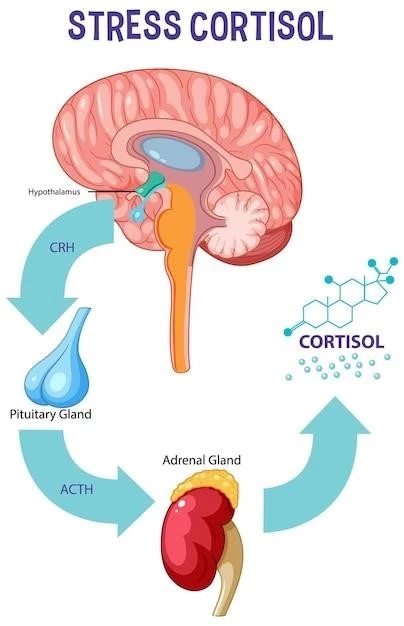Understanding Meningoencephalocele
Meningoencephalocele is a congenital anomaly characterized by the protrusion of the brain, meninges, and cerebrospinal fluid through a defect in the skull. This condition can impact neurological function and lead to developmental delays. Surgical procedures are often necessary to address meningoencephalocele.

Introduction
Meningoencephalocele is a rare type of neural tube defect where the brain, meninges, and cerebrospinal fluid protrude through a defect in the skull, forming a sac-like structure. This congenital anomaly occurs during the early stages of fetal development when the neural tube fails to close completely, resulting in this abnormality. Meningoencephalocele can manifest in different areas of the skull, most commonly in the frontal and temporal lobes.
Individuals with meningoencephalocele may present with varying degrees of symptoms, including visible protrusions on the skull, neurological impairments, and an increased risk of infection due to the exposure of brain tissue. The diagnosis of this condition is usually made through imaging studies such as MRI or CT scans.
Treatment for meningoencephalocele typically involves surgical intervention to repair the skull defect and carefully place the protruding brain tissue back into the cranial vault. Without proper treatment, individuals with this condition may experience ongoing complications such as neurological impairment and developmental delays.
Understanding the underlying causes, symptoms, and treatment options for meningoencephalocele is crucial in providing comprehensive care for affected individuals. In the following sections, we will delve deeper into the anatomy of this condition, its impact on neurological function, challenges in development, and the specific areas of the brain that are affected.
Anatomy of the Condition
Meningoencephalocele involves a complex anatomical presentation where the brain, meninges, and cerebrospinal fluid herniate through a defect in the skull. The meninges are the protective membranes that cover the brain and spinal cord, consisting of the dura mater, arachnoid mater, and pia mater.
When a meningoencephalocele occurs, these structures protrude through the skull defect, leading to a sac-like formation on the surface of the head. This protrusion exposes the brain tissue to external elements and poses a risk of infection and damage to the neural tissue.
The location of the meningoencephalocele can vary, with the frontal lobe and temporal lobe being common sites of herniation. The frontal lobe is involved in higher-level cognitive functions, personality, and voluntary movements, while the temporal lobe plays a role in memory, language, and emotions.
The presence of a meningoencephalocele can disrupt the normal structure and function of these brain regions, leading to neurological deficits and potential complications. Understanding the intricate anatomy of this condition is essential for determining the appropriate treatment approach and addressing potential challenges in management.
Meningoencephalocele as a Congenital Anomaly
Meningoencephalocele is classified as a congenital anomaly, meaning it is a condition present at birth and arises due to abnormalities in fetal development. Specifically, meningoencephalocele is a type of neural tube defect, which occurs when the neural tube – the structure that eventually forms the brain and spinal cord – fails to close completely during embryogenesis.
As a result of this incomplete closure, a sac-like protrusion containing brain tissue, meninges, and cerebrospinal fluid forms through a defect in the skull. This anomaly is typically detected either prenatally through imaging studies or shortly after birth based on physical examination findings.
The exact cause of meningoencephalocele is not fully understood, but genetic, environmental, and nutritional factors may play a role in its development. Factors such as folic acid deficiency in the mother’s diet or exposure to certain teratogenic substances during pregnancy are thought to contribute to the occurrence of neural tube defects like meningoencephalocele.
Given its complex etiology and potential impact on neurological function, meningoencephalocele requires careful evaluation and management by a multidisciplinary medical team. Understanding this condition as a congenital anomaly is crucial in providing appropriate care and support for individuals affected by this rare condition.
Diagnosis and Symptoms
Diagnosing meningoencephalocele typically involves a combination of physical examination, imaging studies, and clinical assessment. The most common diagnostic tools used to identify this condition include MRI (Magnetic Resonance Imaging) and CT (Computed Tomography) scans, which provide detailed images of the brain, skull, and any protruding structures.
Individuals with meningoencephalocele may present with a range of symptoms, depending on the size and location of the protrusion. Visible lumps or sacs on the scalp, particularly in the frontal or temporal regions, are often observed. These sacs may contain cerebrospinal fluid, brain tissue, or meninges.
Neurological symptoms can also manifest in individuals with meningoencephalocele, including developmental delays, seizures, cognitive impairments, and motor deficits. In some cases, the protrusion may be associated with an increased risk of infection due to the exposure of brain tissue to external pathogens.
Early detection and diagnosis of meningoencephalocele are crucial for initiating timely interventions and implementing a comprehensive treatment plan. Healthcare providers rely on a combination of clinical findings and imaging studies to accurately assess the extent of the anomaly and plan appropriate management strategies to address the symptoms and underlying causes of the condition.
Treatment Options
The treatment of meningoencephalocele typically involves surgical intervention to repair the skull defect and address the herniation of brain tissue and meninges. The primary goal of surgery is to carefully reposition the protruding structures back into the cranial vault and close the skull defect to prevent further complications.
The timing of surgical intervention for meningoencephalocele may vary depending on the individual’s overall health, the size and location of the protrusion, and any associated symptoms or neurological impairments. In some cases, surgery may be performed shortly after birth to reduce the risk of infection and optimize outcomes.
Surgical techniques for treating meningoencephalocele have evolved over the years, with advancements in neurosurgical approaches and technologies. The specific surgical procedure chosen will depend on the characteristics of the anomaly and the expertise of the surgical team.
Following surgery, individuals with meningoencephalocele will require long-term monitoring and follow-up care to assess their neurological function, development, and overall well-being. Physical therapy, occupational therapy, and other supportive interventions may be recommended to help individuals achieve their optimal functional outcomes.
While surgical repair is the mainstay of treatment for meningoencephalocele, a multidisciplinary approach involving neurosurgeons, pediatricians, and other specialists is essential to provide comprehensive care and support for individuals affected by this complex congenital anomaly.
Impact on Neurological Function
Meningoencephalocele can have a significant impact on neurological function due to the protrusion of brain tissue and meninges through the skull defect. The herniation of these structures can disrupt normal brain anatomy and function, leading to a variety of neurological impairments.
Individuals with meningoencephalocele may experience a range of neurological deficits, including motor impairments, cognitive delays, seizures, and sensory abnormalities. The extent of these deficits depends on the size and location of the protrusion, as well as any damage to the surrounding brain tissue.
The frontal lobe and temporal lobe are commonly affected by meningoencephalocele, which can result in challenges with executive functions, emotional regulation, memory, and language skills. These areas of the brain play crucial roles in higher-order cognitive processes and social interaction.
In some cases, the protrusion of brain tissue may compress adjacent structures or interfere with the flow of cerebrospinal fluid, leading to complications such as hydrocephalus. Hydrocephalus is a condition characterized by the accumulation of excess cerebrospinal fluid in the brain, which can cause increased intracranial pressure and further neurological symptoms.
Understanding the impact of meningoencephalocele on neurological function is essential for designing tailored treatment plans and rehabilitation strategies to help individuals optimize their cognitive and motor abilities. Ongoing monitoring and neurodevelopmental support are vital to address the complex challenges associated with this congenital anomaly;
Developmental Delays and Challenges
Individuals with meningoencephalocele often face developmental delays and challenges due to the complex nature of this congenital anomaly. The impact of the protrusion of brain tissue and meninges can result in various cognitive, motor, and sensory impairments that affect a child’s overall development.
Developmental delays in children with meningoencephalocele may manifest as delays in reaching milestones such as sitting, crawling, walking, and speaking. These delays can be attributed to the disruption of neural pathways and brain structures caused by the herniation of brain tissue through the skull defect.
Cognitive challenges, including difficulties with memory, attention, problem-solving, and academic achievement, are commonly observed in individuals with meningoencephalocele. The involvement of critical brain regions such as the frontal lobe and temporal lobe can impact executive functions and social cognition.
Motor coordination and fine motor skills may also be affected in individuals with meningoencephalocele, leading to challenges with activities of daily living, handwriting, and physical coordination. Physical therapy and occupational therapy play a crucial role in promoting motor development and enhancing independence.
Addressing developmental delays and challenges associated with meningoencephalocele requires a comprehensive and multidisciplinary approach involving pediatricians, neurologists, therapists, and educators. Early interventions, individualized education plans, and supportive therapies are essential in helping children with this condition reach their full potential and improve their quality of life.
Specific Areas of Brain Affected
Meningoencephalocele can impact specific areas of the brain, with the frontal lobe and temporal lobe being commonly affected by this congenital anomaly. The frontal lobe plays a crucial role in executive functions such as decision-making, problem-solving, and impulse control, as well as personality and emotional regulation.
Damage or displacement of the frontal lobe due to meningoencephalocele can lead to deficits in cognitive flexibility, social behavior, and motor planning. Individuals may experience challenges in organizing thoughts, setting goals, and inhibiting inappropriate behaviors, affecting their overall social and academic functioning.
The temporal lobe, another area frequently affected by meningoencephalocele, is responsible for functions related to memory, language processing, and emotional responses. Disruption in the temporal lobe can result in memory deficits, language impairment, and difficulties in recognizing faces or understanding emotions.
Both the frontal lobe and temporal lobe are critical for higher-order cognitive processes and social interactions, making their proper development essential for overall neurodevelopment. The presence of meningoencephalocele can interfere with the structural integrity and functional connectivity of these brain regions, leading to a variety of neurological symptoms and challenges.
Understanding the specific areas of the brain affected by meningoencephalocele is essential for tailoring treatment interventions, rehabilitation strategies, and educational support to address the unique needs of individuals with this condition. Multidisciplinary collaboration among healthcare providers, educators, and therapists is vital in optimizing outcomes and enhancing the quality of life for those affected by meningoencephalocele.
Surgical Procedures
Surgical intervention is a crucial component of the treatment plan for meningoencephalocele, aiming to repair the skull defect and reposition the protruding brain tissue and meninges. The specific surgical procedure chosen depends on the size, location, and characteristics of the meningoencephalocele.
One common surgical approach for meningoencephalocele repair is the craniotomy, where a neurosurgeon creates an opening in the skull to access the protruding structures and carefully place them back into the cranial vault. The skull defect is then closed using a combination of bone grafts, plates, or synthetic materials to provide protection and support.
In cases where the meningoencephalocele extends into the nasal or sinus cavities, additional procedures may be required to address these complex anatomical challenges. Endoscopic techniques or multidisciplinary collaborations with otolaryngologists and craniofacial surgeons may be necessary to ensure comprehensive repair and reconstruction.
Neuroimaging technologies such as intraoperative MRI or neuronavigation systems are often utilized during surgery to guide the precise repositioning of brain structures and ensure optimal outcomes. Minimally invasive approaches may also be considered based on the individual’s condition and surgical team’s expertise.
Following surgery, close monitoring and postoperative care are essential to assess for any complications, promote healing, and support neurological recovery. Physical therapy, speech therapy, and other rehabilitative interventions may be recommended to help individuals regain function and achieve their developmental milestones.
Overall, surgical procedures play a critical role in the management of meningoencephalocele, offering individuals the opportunity to address the structural abnormalities associated with this condition and improve their long-term outcomes with appropriate postoperative care and support.
